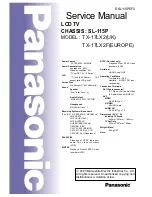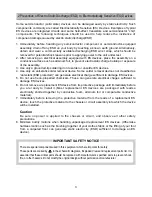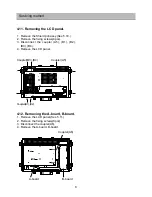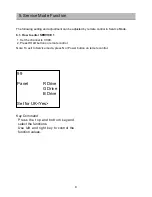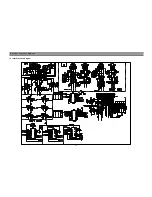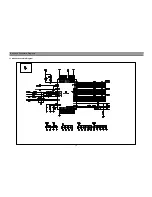
3
2 Prevention of Electro Static Discharge (ESD) to Electrostatically Sensitive(ES) Devices
Some semiconductor (solid state) devices can be damaged easily by static electricity. Such
components commonly are called Electrostatically Sensitive (ES) Devices. Examples of typical
ES devices are integrated circuits and some field-effect transistors and semiconductor “chip”
components. The following techniques should be used to help reduce the incidence of
component damage caused by electro static discharge(ESD).
1. Immediately before handling any semiconductor component or semiconductor-equipped
assembly, drain off any ESD on your body by touching a known earth ground. Alternatively,
obtain and wear a commercially available discharging ESD wrist strap, which should be
removed for potential shock reasons prior to applying power to the unit under test.
2. After removing an electrical assembly equipped with ES devices, place the assembly on a
conductive surface such as alminum foil, to prevent electrostatic charge buildup or exposure
of the assembly.
3. Use only a grounded-tip soldering iron to solder or unsolder ES devices.
4. Use only an anti-static solder removal device. Some solder removal devices not classified as
“anti-static(ESD protected)” can generate electrical charge sufficient to damage ES devices.
5. Do not use freon-propelled chemicals. These can generate electrical chages sufficient to
damage ES devices.
6. Do not remove a replacement ES device from its protective package until immediately before
you are ready to install it.(Most replacement ES devices are packaged with leadse
electrically shorted together by conductive foam, alminum foil or comparable conductive
material).
7. Immediately before removing the protective material from the leads of a replacement ES
device, touch the protective material to the chassis or circuit assembly into which the device
will be installed.
Caution
Be sure no power is applied to the chassis or circuit, and observe all other safety
precautions.
8. Minimize bodily motions when handling unpackaged replacement ES devices. (Otherwise
hamless motion such as the brushing together of your clothes fabric or the lifting of your foot
from a carpeted floor can generate static electricity (ESD) sufficient to damage an ES
device).
There are special components used in this epuipment which are imporant for safety.
These parts are maked by
in the schematic diagrams, Exploded Views and replacement parts list. lt is
essential that these critical parts should be replaced with manufacturer’s specified parts to prevent shock,
fire, or other hazards. Do not modify the original design without permission of manufacturer.
IMPORTANT SAFETY NOTICE
Summary of Contents for Viera TX-17LX2
Page 12: ...11 Conductor Views 6 2 MAIN PCB BOTTOM...
Page 14: ...13 Block and Schematic Diagrams 7 2 Signal Block Diagram...
Page 15: ...14 Block and Schematic Diagrams 7 3 Power Schematic Diagram...
Page 16: ...15 Block and Schematic Diagrams 7 4 VCTI Schematic Diagram...
Page 17: ...16 Block and Schematic Diagrams 7 5 Input Schematic Diagram...
Page 18: ...17 Block and Schematic Diagrams 7 6 Memory AMP Schematic Diagram...
Page 19: ...18 Block and Schematic Diagrams 7 7 AD9883 Schematic Diagram...
Page 20: ...19 Block and Schematic Diagrams 7 8 Deinterlace Schematic Diagram...
Page 21: ...20 Block and Schematic Diagrams 7 9 SDRAM Schematic Diagram...
Page 22: ...21 Block and Schematic Diagrams 7 10 Image Processor Schematic Diagram...
Page 23: ...22 Block and Schematic Diagrams 7 11 LVDS KEY Schematic Diagram...
Page 25: ...24 Parts Location Mechanical Replacement Parts List 8 2 Packing Exploded View...

